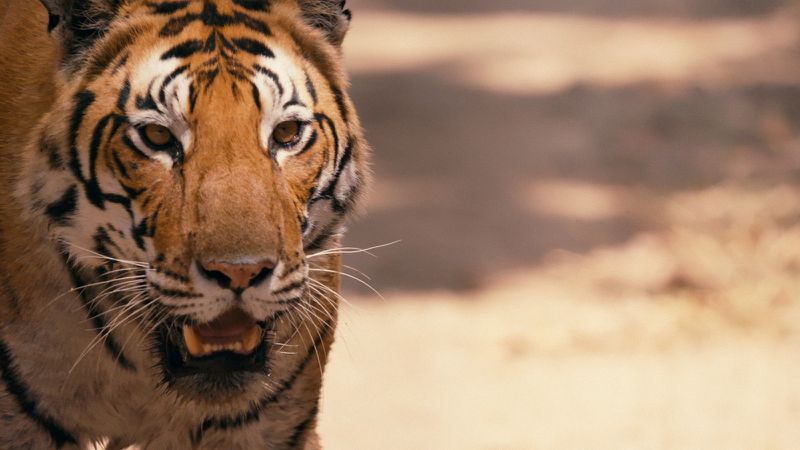Tigerland, a 2019 feature-length documentary directed by Ross Kauffman, is an excellent representation of one of the many topics that the festival values. Mountainfilm started with films mainly centered around sports but has grown over the years to show films that raise awareness about a variety of topics, such as nature, animals, and different experiences that humans can have. Tigerland weaves together Nichols’ observational and expository modes, a compelling storyline and characters, and beautiful cinematography and animation to create a gripping, inspirational film that will inspire its audience to take action.

Pavel Fomenko, head of the Department for Conservation of Rare Species, has made it his life’s work to save and preserve wild tigers as well as their habitat
Part of what makes documentary films and filmmaking so much fun are the people that you meet and the stories that they tell you. The two charismatic characters featured throughout this film are Pavel Fomenko and Kailash Sankhala, both of whom have made it their life’s work to save and preserve wild tigers as well as their habitat. Pavel is the head of the Department for Conservation of Rare Species, working to protect tigers in the far east of Russia. Kailash worked for the conservation of tigers in India, persuading the prime minister Indira Gandhi to pass a law that banned the hunting of tigers. Pavel is a charismatic man to have in front of the camera, saying beautiful things about not only the tigers, but his family and friends as well. Kailash is represented through his grandchildren and great grandchildren throughout the film, being painted in a positive and caring light.
The two prominent storytelling modes found in Tigerland are the expository and the observational. Expository mode characteristics are shown through the fact that these people working to save tigers have a solid argument and reasoning for their efforts, along with a problem-solution structure and evidentiary editing. Characteristics of the observational mode include the silent camera watching the tigers and the conservationists do their work without interfering in a substantial way.
The use of animation is one of Tigerland’s most distinguishing characteristics. Tigerland is composed of not only wonderfully cinematic shots, but gorgeous animation as well. Most of the shots featured throughout the film were well-framed, had a nice depth of field, and had good lighting. Shots that are an example of these techniques feature the tigers, along with Pavel Fomenko. Other film shots consisted of dashcam and drone footage, mainly featured during tiger chases. To go along with the shots captured by the camera, animation was also included in flashbacks of Kailash’s life throughout the film as well as during scenes where statistics were being discussed. With the statistics on tiger populations, animation was used with a world map to show how big the populations used to be before shrinking to show the current data. The animation featured during Kailash’s flashbacks on the other hand were far more detailed, with the smooth-flowing animation looking like a hand-made painting come to life.
Full of unique storytelling modes, interesting characters, and beautiful camera work, Tigerland is a captivating film from the start. The expository mode utilized helps to motivate the audience to be aware of the decreasing tiger populations, while characters such as Pavel and Kailash reinforce that call by sharing their own stories. Finally, the animation provides visuals for the audience in regard to statistics and the life of a conservationist. Tigerland is a work of art and created for a great cause, which is one of the big reasons as to why it was a perfect fit for the Mountainfilm festival.
(There currently isn’t an official trailer available for Tigerland, so here is a small clip on the film’s director Ross Kauffman talking about the film (no spoilers) with a few clips from the film involved.)


Trackbacks/Pingbacks